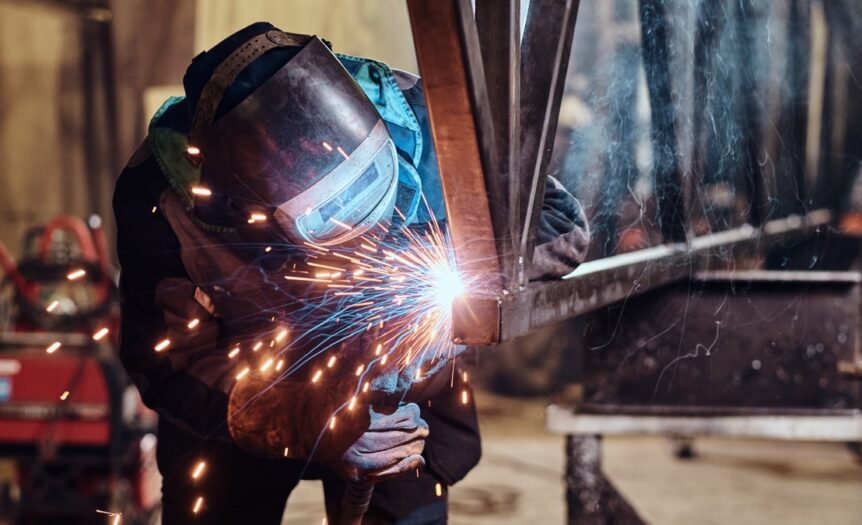In the competitive landscape of manufacturing, reducing costs without compromising on quality is a core objective for businesses involved in metal fabrication. The process of cutting, bending, and assembling metal structures is inherently resource-intensive, involving significant material and labor costs. However, with strategic planning and the implementation of best practices, you can achieve substantial cost savings.
Let’s look at tips for reducing metal fabrication costs and how they can help businesses stay competitive in the industry.
Optimize Design for Manufacturing (DFM)
Design for Manufacturing (DFM) is an approach that involves designing a product with its manufacturing process in mind. Optimizing the design ensures the efficient use of materials and minimizes waste during fabrication. A well-designed product can reduce production time and labor costs, ultimately leading to lower fabrication costs.
Some key factors to consider in DFM include standardizing parts and components, minimizing the number of manufacturing steps, and reducing the complexity of designs.
Choose the Right Materials
The choice of materials significantly impacts fabrication costs. While high-grade materials may result in a stronger and more durable final product, they come with a higher price tag. On the other hand, cheaper materials may not offer the quality or strength you desire.
Therefore, it is essential to carefully evaluate the requirements of a project and choose materials that meet those needs without unnecessary added costs. Additionally, opting for recycled or reclaimed materials can help reduce costs while promoting sustainability.
Use Automation
Automation has revolutionized the metal fabrication industry, reducing production time and costs. By automating repetitive tasks such as cutting, welding, and bending, businesses can save on labor costs while also improving accuracy and consistency.
Investing in advanced machinery and technology may seem like a significant initial investment. However, the long-term cost savings make it worthwhile for businesses looking to reduce fabrication costs.
Implement Lean Manufacturing Principles
Lean manufacturing is a systematic approach to eliminating waste and improving efficiency in the manufacturing process. By identifying and eliminating non-value-added activities, businesses can reduce costs and improve overall productivity.
Some key principles of lean manufacturing include continuous improvement, just-in-time production, and value stream mapping. By implementing these principles, businesses can streamline their operations and achieve significant cost savings.
Regularly Evaluate Processes
Regular evaluation of fabrication processes is crucial in identifying areas for improvement and cost reduction. By analyzing production data, businesses can identify bottlenecks, inefficiencies, and wastage that may drive up costs.
Continuous evaluation also allows for the implementation of new technologies or methods that may further reduce costs while maintaining quality standards. It is an ongoing process that can help businesses stay competitive and adapt to changing market demands.
Collaborate With Suppliers
Partnering with reliable and cost-effective suppliers can also help reduce fabrication costs. Businesses can achieve significant savings by negotiating bulk discounts, sourcing materials from multiple suppliers, or finding more affordable alternatives.
Moreover, maintaining good relationships with suppliers allows for open communication and the opportunity to explore new cost-saving options. It also helps ensure a steady supply of materials, minimizing delays and associated costs.
Reducing metal fabrication costs requires a comprehensive approach that involves optimizing design, choosing the right materials, adopting advanced technology, implementing lean principles, and regularly evaluating processes. Understanding the basics of the sheet metal fabrication process and implementing these cost-saving tips can help businesses reduce costs without compromising on quality. With careful planning and implementation, businesses can stay competitive in the industry while achieving significant cost savings.










 Deering Estate
Deering Estate
 Massage Envy South Miami
Massage Envy South Miami
 Calla Blow Dry
Calla Blow Dry
 My Derma Clinic
My Derma Clinic
 Sushi Maki
Sushi Maki
 Sports Grill
Sports Grill
 The Healthy Kitchen
The Healthy Kitchen
 Golden Rule Seafood
Golden Rule Seafood
 Malanga Cuban Café
Malanga Cuban Café

 Kathleen Ballard
Kathleen Ballard
 Panter, Panter & Sampedro
Panter, Panter & Sampedro
 Vintage Liquors
Vintage Liquors
 The Dog from Ipanema
The Dog from Ipanema
 Rubinstein Family Chiropractic
Rubinstein Family Chiropractic
 Your Pet’s Best
Your Pet’s Best
 Indigo Republic
Indigo Republic




 ATR Luxury Homes
ATR Luxury Homes


 2112 Design Studio
2112 Design Studio
 Hamilton Fox & Company
Hamilton Fox & Company
 Creative Design Services
Creative Design Services
 Best Pest Professionals
Best Pest Professionals
 HD Tree Services
HD Tree Services
 Trinity Air Conditioning Company
Trinity Air Conditioning Company
 Cisca Construction & Development
Cisca Construction & Development
 Mosquito Joe
Mosquito Joe
 Cutler Bay Solar Solutions
Cutler Bay Solar Solutions


 Miami Royal Ballet & Dance
Miami Royal Ballet & Dance
 Christopher Columbus
Christopher Columbus
 Pineview Preschools
Pineview Preschools
 Westminster
Westminster
 Carrollton
Carrollton
 Lil’ Jungle
Lil’ Jungle
 Frost Science Museum
Frost Science Museum
 Palmer Trinity School
Palmer Trinity School
 South Florida Music
South Florida Music
 Pinecrest Orthodontics
Pinecrest Orthodontics
 Dr. Bob Pediatric Dentist
Dr. Bob Pediatric Dentist
 d.pediatrics
d.pediatrics
 South Miami Women’s Health
South Miami Women’s Health

 The Spot Barbershop
The Spot Barbershop
 My Derma Clinic
My Derma Clinic




 Miami Dance Project
Miami Dance Project

 Rubinstein Family Chiropractic
Rubinstein Family Chiropractic
 Indigo Republic
Indigo Republic

 Safes Universe
Safes Universe
 Vintage Liquors
Vintage Liquors
 Evenings Delight
Evenings Delight





 Atchana’s Homegrown Thai
Atchana’s Homegrown Thai
 Baptist Health South Florida
Baptist Health South Florida

 Laser Eye Center of Miami
Laser Eye Center of Miami
 Visiting Angels
Visiting Angels
 OpusCare of South Florida
OpusCare of South Florida

 Your Pet’s Best
Your Pet’s Best





 HD Tree Services
HD Tree Services
 Hamilton Fox & Company
Hamilton Fox & Company


 Creative Design Services
Creative Design Services